Tara Mines Excavations
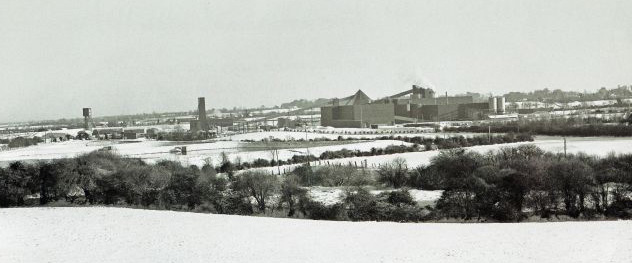
Looking towards Tara Mines photo courtesy James Carney
Tara Mines is the largest lead and zinc mine in Europe and is located on the edge of the built up area of Navan. It is an underground mine which has operated here since 1977. It is the biggest employer in Navan with a workforce of circa 700.
When the mine was being developed in the 1970s, two sites of archaeological significance were uncovered and excavated. One was in the townland of Simonstown and the other was in the townland of Randalstown where the Tara Mines Tailings Dam is located today. The excavations were carried out under the auspices of the National Monuments Advisory Council under the direction of Mr E.P. Kelly M.A., and funded by Tara Mines.
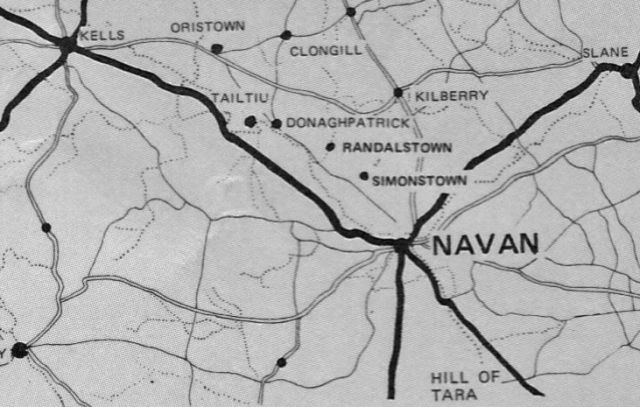
Simonstown Excavations
In Simonstown, the excavations found evidence of four different periods of settlement. The first settlers were Neolithic or New Stone Age people from between 3500-2500 years BC. The remains of their settlement included a polished stone axehead and flint scrapers and arrowheads, and some pits and hearths which might indicate more permanent settlement.
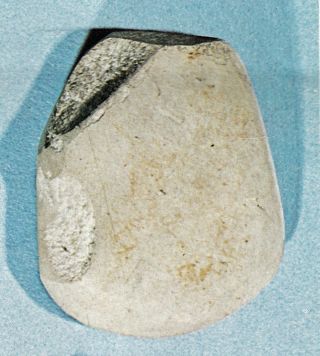
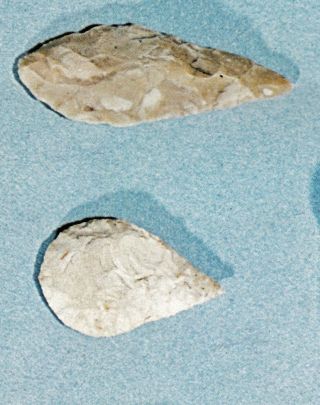
(Above) Neolithic settlement: flint axe head and 2 flint arrow heads from the Simonstown excavations
The remains of a rectangular house with rounded corners represented the second period of settlement. The house was 10.5m long by 6.25m wide, and contained 2 post holes which would have held the posts which supported the roof. The date of this house could not be established.
The third period of settlement is represented by the ring fort which dates from c. 500 A.D. The ring fort, or rath, was circular in shape, with two concentric banks which enclosed an area of about half an acre. An entrance causeway was found in its SW corner. A number of drains were constructed to keep the site dry. They radiated from the centre of the site to the internal ditch.
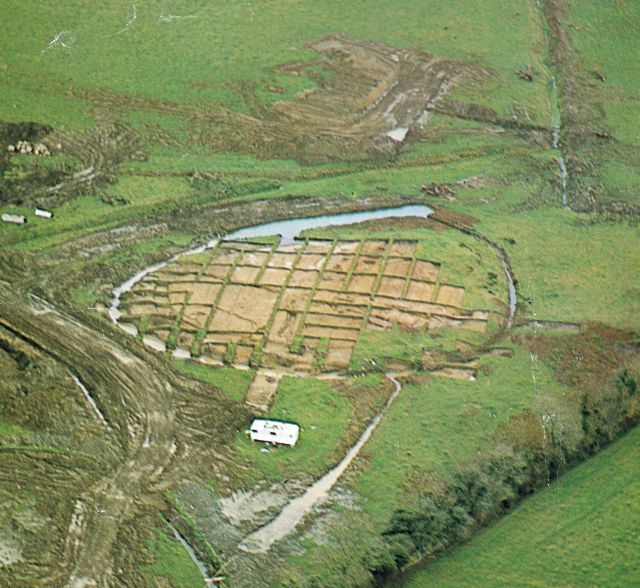
(Above) The completed excavations at Simonstown Ring Fort
A shallow pit furnace, quantities of slag and baked clay and charcoal indicated some smelting activities, typical of early Christian times. The foundations of a small circular house 5m in diameter, possibly from the early Christian period were also uncovered.
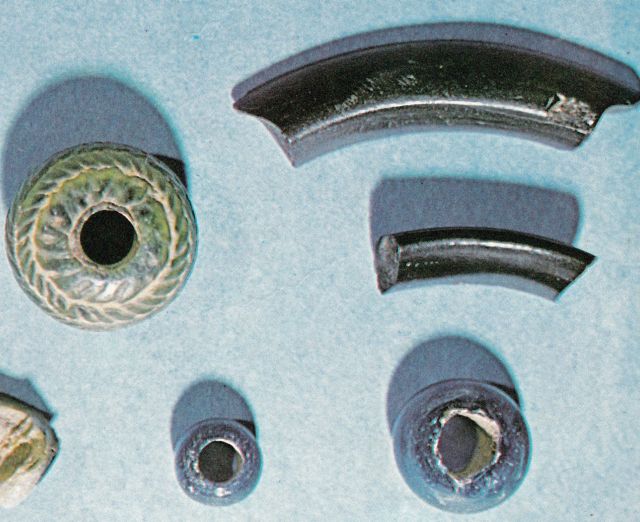
(Above) Glass beads and 2 fragments of jet bracelets from the early Christian period found at Simonstown ringfort.
A great range of artifacts was found within the fort which date from more modern times. These included horse shoes, nails, pen- knives as well as modern delph and clay pipe fragments.
The ringfort at Simonstown indicates the multi period nature of the occupation of this site.
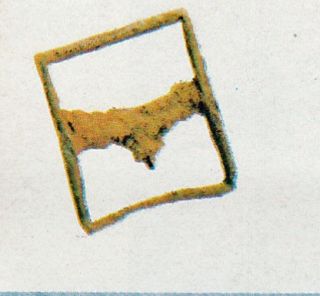
(Left) Post medieval shoe buckle
found at Simonstown
The final period of settlement occurred from the 17th-18th centuries. No house from this period was uncovered, but a wide range of glazed pottery shards and a quantity of animal bones which were uncovered, can clearly be associated with this period.
Randalstown Excavations
The excavations in Randalstown centered on the remains of St. Anne's Medieval Church and Holy Well. Very little remains of St. Anne's chapel today. It measured 10m by 5m with walls around 60cms thick. Under the floor of this chapel is a crypt which is accessed by a series of stone steps. Outside the door of the chapel was a stone upon which the imprint of two knees could be seen. Tradition has it that it was here St. Anne stopped to pray.
At the chapel, an imported Roman fibula (from the 1st century A.D.) was uncovered, as was imported sub Roman pottery, dating from the 5th-8th centuries. These remains suggest possible pre Christian activity at the site.
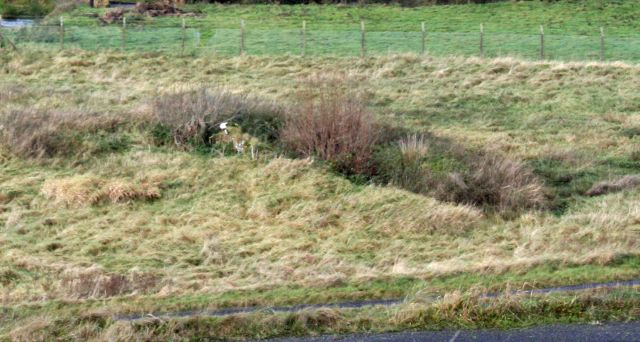
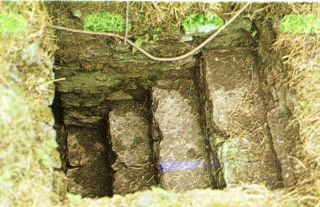
(Above) The grassed over outline of St. Anne's Chapel (photo taken 2010 - by N&DHS as part of the Meath Fieldnames Project) and the steps down to the crypt (photo Tara Mines 1970s). The steps were not visible in 2010.
Local tradition states that during the Cromwellian period, the Everards of Randalstown opposed the Parliamentary forces, and were subsequently ousted from their lands. The estate then passed into the hands of a planter who destroyed the chapel. With the Restoration, it is believed that the land was returned to the Everards who retained it until the 20th century. [see: Tobacco]. There is no documentary evidence to support this tradition, but the archaeological evidence does throw some light on this site during this period.
The donation of a chalice in 1637 for the services of the church would seem to indicate that the church was in use up to that date. There is evidence that the church was destroyed at some stage during the 17th century as a layer containing some 17th century objects overlies the collapsed church wall; this would tie in with the local tradition of the destruction of the chapel during Cromwellian times. It was certainly in a ruined state when visited by the Ordnance Survey in the 1830s.
St Anne's Well is located just outside the boundary fence of the Tara Mines Tailings Dam, about 75m SW of St. Anne's Chapel. It is a natural spring, with stone steps leading down to it. When examined by the archaeologists during the dig at Randalstown in the mid 1970s, three rags hung from a blackthorn bush beside it. Their condition indicated that they had been there for some time. In local tradition the waters of the well were used to cure toothache, headache and sore eyes, and afflictions like ringworm and thrush.
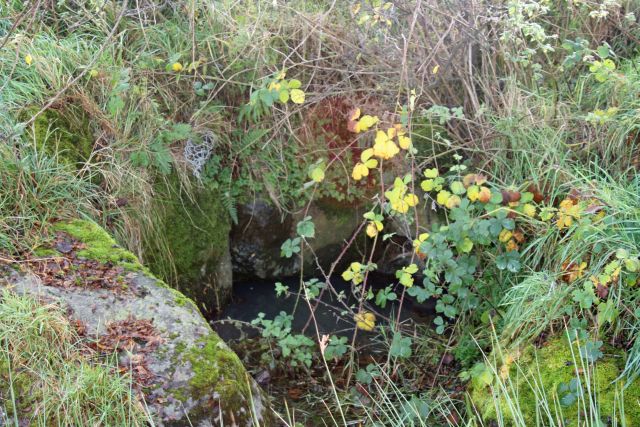
(Above) St. Anne's Well pictured 2010 (photo © N&DHS)
The is a long tradition, perhaps going back to pagan times, of veneration at St Anne's Well, possibly asssociated with Anú, the mother of the Irish gods.
See also: Nevinstown Excavations
Sources:
A Future for Our Past, Tara Mines (1973)
Meath Holy Wells, Noel French, Meath Heritage Centre Trim 2012
The Chapel and Well of St. Anne's - The Schools' Manuscript Collection in Navan - Its People and Its Past vol. 2 (2013) p. 237-9